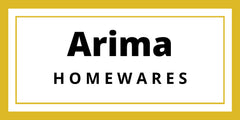
Anatomy of a Chef’s Knife: Everything You Need to Know
It wouldn’t be an exaggeration to say that chef’s knives are probably the most important tool that chefs and cooks have in their arsenal. Indeed, chef’s knives are incredibly versatile and are used in every step of the cooking process. Considering how important they are, it’s rather surprising how little people actually know about chef’s knives. To help address this issue, we thought it would be useful to break down the different parts that make up a chef’s knife. By doing this, we aim to further your understanding of this incredibly useful tool. If this is something that you’re interested in learning more about, read on as we discuss the anatomy of a chef’s knife.
The Blade
The best knives are made of high-carbon stainless steel, which is a hard metal that holds an edge for a long time. Unlike some carbon steel knives, the blade won’t discolour or rust. Of course, not all carbon steel knives are inferior. Some chefs prefer the softer metal because it is easier to sharpen, but they go dull faster. A chef's knife measures around 10 inches and can be longer, depending on your preference. The so-called "German" style is often more curved at the tip, and good for chopping vegetables in an up-and-down motion. The "French" style looks more triangular and is better for slicing vegetables because you draw the knife straight back towards you.
The Handle
The part of a chef's knife that you will most often contact is usually the handle. You will want to make sure it is made so that it is comfortable and fits your hand, as it should not feel slippery or require you to grip too hard.
Wooden handles were traditionally used on chef's knives, but they present some problems. For starters, wood is porous, which means it can harbour bacteria that cause food-related illnesses. In addition, many local health departments prohibit the use of wooden-handled knives in commercial food manufacturing. Bacteria can also grow where the steel and wood connect on the knife, or around the rivets. Don't put wooden handles in the dishwasher, though. They crack or warp in the water. Knives with plastic or rubber handles are increasingly popular. Some knives have composite handles made of wood treated with plastic resin, which ensures the safe use of the knife by minimizing sanitation concerns.
The Heel
The heel is the widest part of the knife. This is located near the rear end of the blade. This section of the blade is utilized for chopping harder food items such as carrots, nuts, and even chicken bones. If you’re looking for more leverage, it would be best to look for a longer chef’s knife.
The Tang
A blade with a full tang is made out of steel all the way into the handle. To ensure strength, a full-tang blade is constructed so that the steel extends all the way to the end of the handle. The better balance of a full-tang knife makes it easier to use, but partial-tang and half-tang knives are barely worth talking about.
The Rivets
Rivets are the raised cylindrical studs that keep the handle attached to the tang. It would be best to look for a knife wherein the rivets don’t protrude, as this will allow you to handle the knife more smoothly.
Conclusion
We hope this article proves to be useful when it comes to helping you gain a better understanding of the different parts that make up a chef’s knife. As you can see, all of these parts are vital to how well a chef’s knife functions. While it may seem like a simple tool, a lot goes into the creation of a chef’s knife as all of its parts play a vital role in how well the knife, as a whole, performs. Feel free to go back to this article if you ever feel like you need a quick refresher on the different parts of a chef’s knife.
If you’re looking for high-quality knives, then you’ve come to the right place. Bronx Homewares is a small Australian-owned business offering cookware, home decor, and more. If you are looking for chef's knives and more, check out what we offer!

